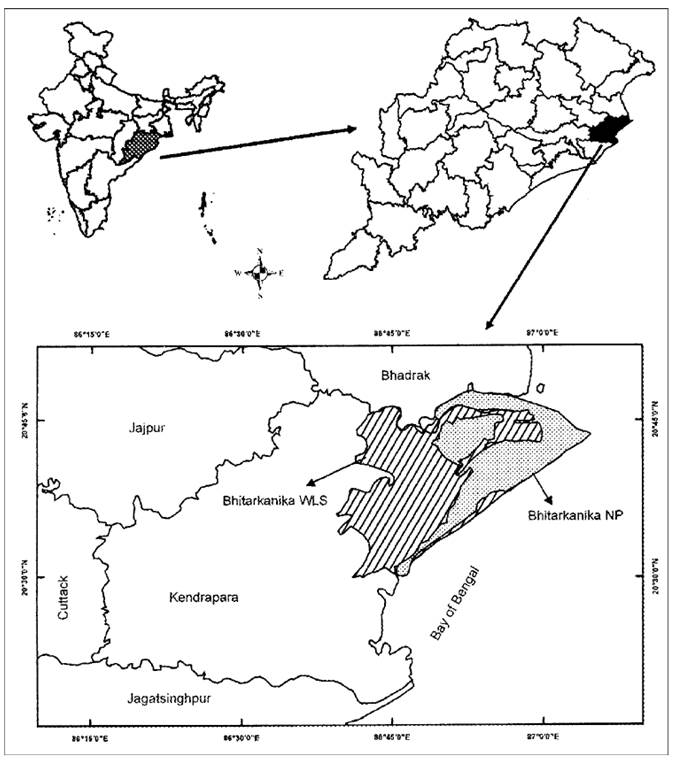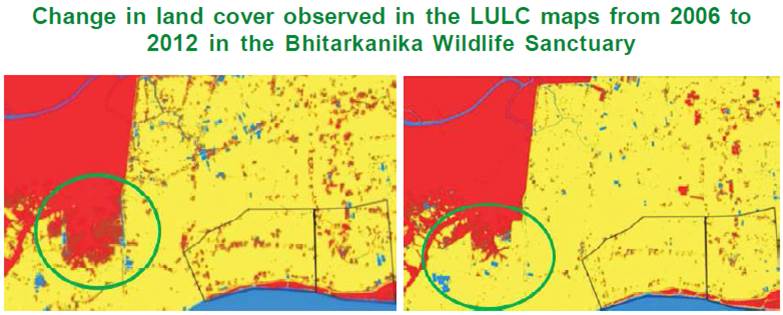|
Remote Sensing and Geographical Information System for M angrove forests are the most productive eco systems on
this earth. While mangroves provide essential services that have the
potential to enhance livelihoods, overexploitation of mangrove resources
is proving to be unsustainable. Additionally, mangroves and the
communities dependent on them are threatened by climate change. The
current scenario if left unchecked has the potential to result in a
major loss of livelihoods and incomes along with increased vulnerability
of the mangrove dependent communities. systems on
this earth. While mangroves provide essential services that have the
potential to enhance livelihoods, overexploitation of mangrove resources
is proving to be unsustainable. Additionally, mangroves and the
communities dependent on them are threatened by climate change. The
current scenario if left unchecked has the potential to result in a
major loss of livelihoods and incomes along with increased vulnerability
of the mangrove dependent communities.
Remote Sensing (RS) and Geographical Information System (GIS) are important tools to detect changes in the mangrove forest areas. The changes can be easily visible by using satellite images and other image enhancement techniques. In the last few decades, survival of mangroves has been subject to different threats and anthropogenic pressures. Bhitarkanika Wildlife Sanctuary in Odisha is one such area where the threats include agriculture, shrimp farming, harvesting fuel wood and timber, grazing by domestic animals, harvesting non-wood forest products and sewage discharge. Study of Mangrove Cover Change in Bhitarkanika Wildlife Sanctuary, Odisha Development Alternatives (DA) has done a study on
Mangrove Conservation and Management - Enhancing Livelihood
Opportunities for Mangrove Dependent Communities in Bhitarkanika
Wildlife Sanctuary, Odisha. To promote effective management of the
mangroves, land-use/land cover (LULC) mapping and change detection was
carried out using Satellite Remote Sensing and GIS techniques.
Study Area - Bhitarkanika Wildlife Sanctuary, Kendraparha district, Odisha. Chanrakolha and Garta villages in the sanctuary were the focus of the study. The study monitors changes in the mangrove cover and investigates the pressures. Certain mangrove areas of 2006 appear sparse or fallow in the 2012 map. This study is part of a larger project that focuses on increasing awareness and capacities of local communities for the sustainable use of mangrove resources. It also aims to reduce dependence of communities on mangrove resources by enhancing alternative livelihood opportunities. q Avanindra Kumar
|
